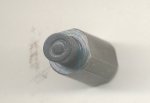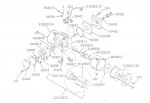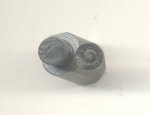- 10,350
- 75
- 48
- Location
- Meadows of Dan, Virginia
The image below shows a plunger portion of the shut-off valve for the SW fuel burning heater. The rubber/plastic "plug" has been seated against the valve opening for twenty some years and now has an imprint, which causes the valve not to seat correctly at all times, it may or may not leak, depending on how it ends up on the valve opening.
The plunger is circled in second image. The offending plunger "button" is #735411...
Question: How can this be restored to original (flat surface)? Buying a replacement plunger or "button" is not an option ( rebuild kit runs close to a hundred and I believe SW has a minimum purchase of 3 for this).
Possible solutions:
1) Slicing it off with a sharp blade?
2) Heat?
3) Sanding/polishing?
4) Other, chemical?
Any suggestion is welcome.
TIA
The plunger is circled in second image. The offending plunger "button" is #735411...
Question: How can this be restored to original (flat surface)? Buying a replacement plunger or "button" is not an option ( rebuild kit runs close to a hundred and I believe SW has a minimum purchase of 3 for this).
Possible solutions:
1) Slicing it off with a sharp blade?
2) Heat?
3) Sanding/polishing?
4) Other, chemical?
Any suggestion is welcome.
TIA
Attachments
-
37.9 KB Views: 50
-
41.9 KB Views: 47
Last edited:





